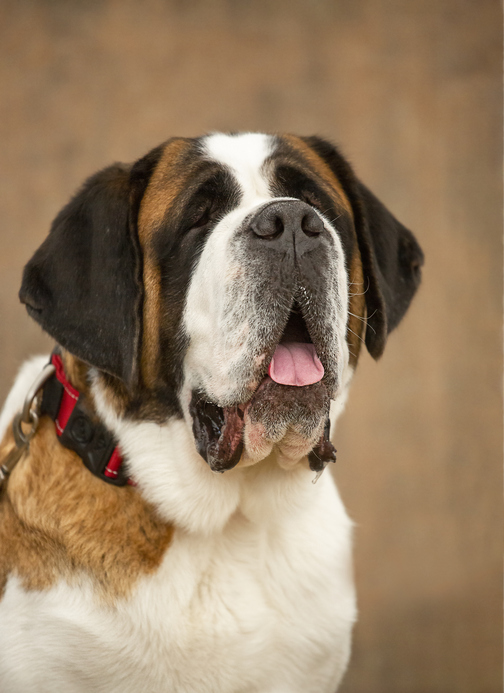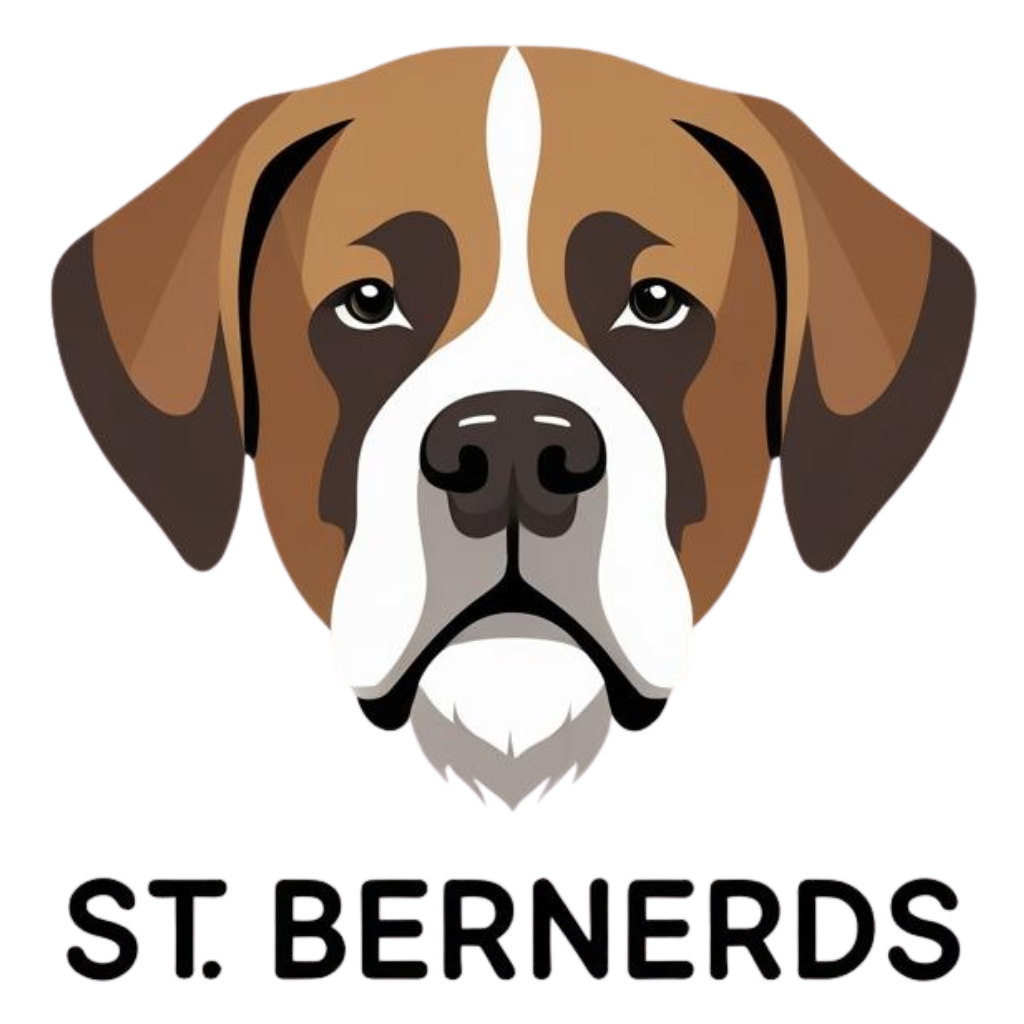If you’ve got a Short Hair Saint Bernard or you’re thinking about bringing one into your family, you’re in for a treat. These gentle giants are just as lovable as their long-haired counterparts, but with a bit of a different vibe when it comes to their coat. Saint Bernards, originally bred as rescue dogs in the Swiss Alps, are known for their massive size, sweet temperament, and, of course, their iconic fur. While most people picture the classic long-haired version, the Short Hair St Bernard is a variation that’s just as amazing but often flies under the radar.
So, what’s the deal with the Short Hair Saint Bernard compared to the long-haired variety? Well, for starters, the short-haired version has a smoother, closer-to-the-body coat that doesn’t have the same fluffy, flowing look. This difference isn’t just cosmetic—it impacts grooming needs, shedding patterns, and even how they handle different climates. The short hair variation was historically favored in some regions for working purposes because it was easier to maintain in harsh, snowy conditions. Less fur meant less snow and ice buildup, which was a big plus for a working dog.
Now, let’s clear up some misconceptions about the Saint Bernard Short Hair. A lot of folks think that because the coat is shorter, these dogs don’t shed as much or need less care. Spoiler alert: that’s not entirely true! They still have a dense double coat, and shedding is definitely a thing (more on that later). Others assume short-haired Saints aren’t as “authentic” as the long-haired ones, but both variations are recognized by major kennel clubs like the AKC. So, whether you’ve got a Short Hair St Bernard or are just curious, let’s dive into what makes their coat and care needs unique.

Understanding the Short Hair St Bernard Coat
Alright, let’s talk about that gorgeous coat on a Short Hair Saint Bernard. Unlike the long-haired version, the Saint Bernard Short Hair has a coat that’s smooth, dense, and lies flat against the body. It’s still a double coat, meaning there’s a soft, insulating undercoat beneath a tougher outer layer. This setup helps them stay warm in cold weather and cool in hotter temps, though they’re definitely more suited to cooler climates overall. The texture can feel a bit coarse on the outer layer, but it’s super soft underneath—perfect for petting sessions!
When it comes to grooming, the St Bernard Short Hair has some advantages over the long-haired variety. There’s less fur to tangle or mat, which means you’re not spending hours detangling knots. However, that dense undercoat still needs attention because it can trap dirt, debris, and loose hair if not brushed regularly. Compared to long-haired Saints, grooming a Short Hair St Bernard is generally quicker, but it’s not a “set it and forget it” kind of deal. You’ll still need to stay on top of things to keep their coat looking and feeling great.
One of the biggest perks of a shorter coat? It’s a bit easier on both you and your pup. For the dog, there’s less risk of overheating in milder weather, and for you, there’s less fur to vacuum off your couch (though, let’s be real, St Bernard shedding is still a factor no matter the coat length). Plus, drying them off after a bath or a romp in the rain takes way less time. So, if you’re looking for a Saint Bernard that’s a tad lower-maintenance in the grooming department, the Short Hair St Bernard might just be your perfect match.
Grooming Tips for a Saint Bernard Short Hair
Let’s get into the nitty-gritty of grooming your Short Hair Saint Bernard. First off, you don’t need a ton of fancy tools, but having the right ones will make your life so much easier. Grab a good slicker brush for getting through that dense undercoat, a de-shedding tool (trust me, you’ll thank me later), a sturdy comb for any stubborn spots, and some dog-safe shampoo for bath time. A grooming glove can also be a game-changer for quick touch-ups and bonding with your pup.
Here’s a simple step-by-step guide to grooming your St Bernard Short Hair. Start by brushing them with the slicker brush to remove loose hair and dirt—focus on areas like the neck, back, and hindquarters where fur can get thicker. Use the de-shedding tool once or twice a week to tackle that undercoat, especially during shedding season. Next, check their ears, paws, and underbelly for any debris or irritation since these spots can be prone to issues. Bath time should happen every 6-8 weeks or as needed; just don’t overdo it because too much bathing can strip their natural oils. Finish with a quick comb-through to make sure everything looks smooth.
How often should you groom? For a Saint Bernard Short Hair, a full brushing session 2-3 times a week is usually enough to keep things under control. If you notice more loose hair floating around (hello, St Bernard shedding!), bump it up to daily during peak shedding times. Regular grooming not only keeps their coat healthy but also helps you spot any skin issues early on. Plus, it’s a great way to bond with your big buddy—just keep some treats handy to make it a positive experience!
Dealing with St Bernard Shedding
Speaking of shedding, let’s chat about St Bernard Shedding because, oh boy, it’s a real thing—even with a Short Hair St Bernard. These dogs have that double coat I mentioned earlier, and while the shorter hair might not look as dramatic when it falls out, it still happens. They typically shed year-round, with heavier shedding in the spring and fall as they “blow” their undercoat to adjust to changing seasons. You’ll likely find tufts of fur on your furniture, clothes, and pretty much everywhere else during these times.
So, how do you manage St Bernard Shedding without losing your mind? First, stick to that regular brushing routine we talked about. Using a de-shedding tool can pull out a ton of loose undercoat before it ends up on your floor. Second, invest in a good vacuum or lint roller—seriously, it’s a lifesaver. You can also try grooming wipes or a damp cloth for quick cleanups between full sessions. Keeping your home tidy might feel like a losing battle, but staying consistent with grooming really does cut down on the fur tumbleweeds.
Seasonal shedding is something to prep for with a Short Hair St Bernard. When spring rolls around, expect a big shed as they ditch their winter coat. Same goes for fall when they’re getting ready for colder weather. During these times, you might need to brush daily and even consider a professional grooming session if it feels overwhelming. Also, keep their environment comfy—don’t crank the heat too high in winter or over-cool in summer, as extreme temps can mess with their shedding cycles. With a little planning, you can keep St Bernard Shedding manageable and your home (mostly) fur-free.
Should You Consider a Shaved Saint Bernard?
Now, let’s tackle a hot topic: should you go for a Shaved Saint Bernard? I get it—sometimes the idea of shaving down a Short Hair Saint Bernard sounds like an easy fix for shedding or heat. But hold up, there are some serious pros and cons to think about before grabbing the clippers. On the plus side, a shaved coat means less hair to deal with temporarily, and it might seem like a good way to keep your pup cool in summer. Plus, grooming a Shaved Saint Bernard could feel like a breeze for a while.
However, there are some big downsides. Shaving a St Bernard Short Hair can mess with their natural insulation. That double coat isn’t just for looks—it protects them from heat, cold, and even sunburn. A Shaved Saint Bernard might actually overheat more easily because their skin is exposed, and they lose that protective layer. There’s also the risk of skin irritation or ingrown hairs as the coat grows back unevenly. And let’s not forget, shaving doesn’t stop shedding long-term; it just delays the inevitable.
Instead of shaving, consider alternatives for managing your St Bernard Short Hair. Regular brushing and de-shedding sessions are way safer and just as effective. If heat is a concern, focus on keeping them cool with shade, water, and limited outdoor time during the hottest parts of the day. You can also talk to a professional groomer about a light trim if needed, but avoid a full shave. Trust me, working with their natural coat is the best way to keep your Short Hair St Bernard happy and healthy.
Health and Care for Your Short Hair Saint Bernard
Beyond grooming, let’s talk about the overall health and care of your Short Hair Saint Bernard. These big dogs have some specific needs, and while the shorter coat can make a few things easier, there are still important considerations. For one, their skin can be more exposed to irritants or sunburn compared to long-haired Saints, so keep an eye out for redness, dryness, or hot spots, especially if they spend a lot of time outside. Regular grooming helps here, but so does protecting them from harsh weather.
Vet checkups are a must for any Saint Bernard, including the St Bernard Short Hair. Schedule regular visits to monitor their skin and coat health, as well as their overall well-being. Saints are prone to certain issues like hip dysplasia and bloat, so staying proactive with vet care is key. Ask your vet about any skin or coat concerns during these visits—sometimes a simple change in routine or product can make a big difference for a Short Hair St Bernard.
Diet plays a huge role in coat health too. Feed your St Bernard Short Hair a high-quality dog food that’s rich in omega fatty acids, protein, and essential vitamins. These nutrients support a shiny, healthy coat and can even help reduce St Bernard Shedding over time. Supplements like fish oil or biotin can be great additions if your vet gives the green light. And don’t skimp on hydration—plenty of fresh water helps keep their skin from drying out. A healthy diet plus regular care equals a Short Hair Saint Bernard that looks and feels their best.
Conclusion: Loving Your Short Hair St Bernard
So, there you have it—a full rundown on caring for your Short Hair Saint Bernard! We’ve covered everything from understanding their unique Saint Bernard Short Hair coat to tackling St Bernard Shedding like a pro. Remember, regular grooming with the right tools, managing shedding with consistent brushing, and steering clear of a Shaved Saint Bernard are all key to keeping your pup in top shape. Add in a good diet, vet checkups, and a little extra TLC, and you’re golden.
Owning a St Bernard Short Hair comes with its own set of quirks, but that’s part of the charm. Embrace their shedding, their size, and their big, lovable personality. These dogs are worth every bit of effort, and with the right care, they’ll be your loyal companion for years to come. So, keep brushing, keep loving, and enjoy every slobbery, furry moment with your Short Hair St Bernard. You’ve got this!

Leave a Reply